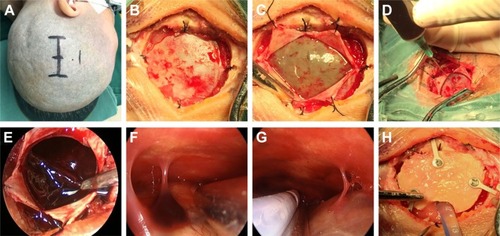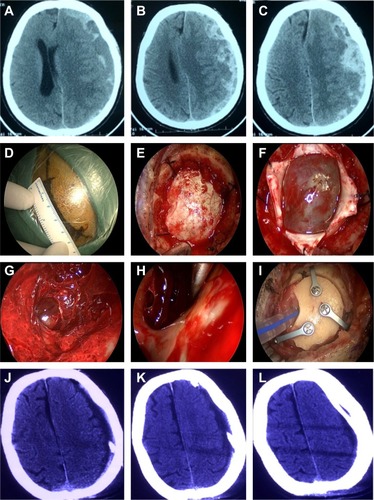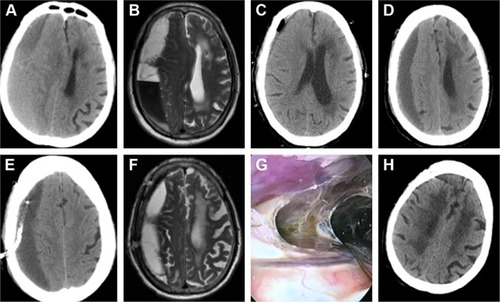Figures & data
Table 1 Demographics, radiographs, intraoperative findings, and postoperative outcomes of the 25 patients with chronic and subacute subdural hematoma treated by neuroendoscopy
Figure 1 The basic steps of neuroendoscopic hematoma evacuation for chronic and subacute subdural hematoma.

Figure 2 Neuroendoscopic surgery for subacute subdural hematoma.
Abbreviation: CT, computed tomography.

Figure 3 Neuroendoscopic surgery for recurrent CSDH.
Abbreviations: CSDH, chronic subdural hematoma; CT, computed tomography; MRI, magnetic resonance imaging.

Figure 4 Incorrect placement of the draining catheter by burr hole.
Abbreviations: CSDH, chronic subdural hematoma; CT, computed tomography; MRI, magnetic resonance imaging.

